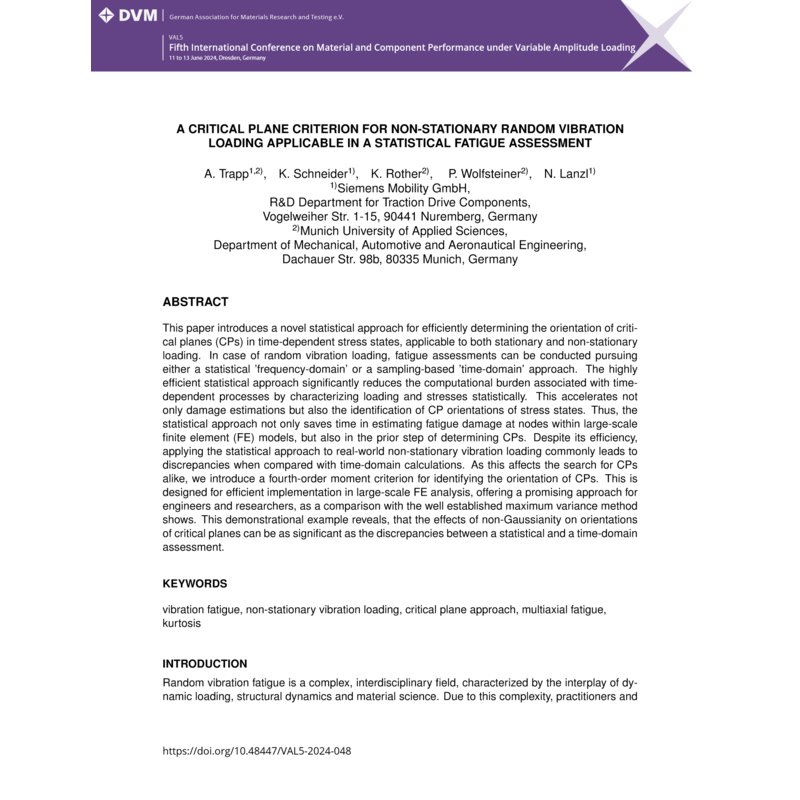- Nur online erhältlich



Random vibration fatigue is a complex, interdisciplinary field. As a result, practitioners and researchers often rely on simplifications for fatigue analysis, which may include assuming stationary Gaussian stress states, and applying uniaxial loading and fatigue criteria. However, in practical applications, loads and stress states are commonly multiaxial and show a non-stationary evolution. This has traditionally demanded a classic time-domain approach, which incurs significant computational costs in analyzing entire finite-element models. In response, recent publications by the authors have introduced the fourth-order non-stationarity matrix (NSM) as an effective statistical characterization that addresses non-stationarity in statistical fatigue analysis. The NSM envisions an extended…

Datenschutzbedingungen (bearbeiten im Modul "Kundenvorteile")

Lieferbedingungen (bearbeiten im Modul "Kundenvorteile")

Rücksendebedingungen (bearbeiten im Modul "Kundenvorteile")
Random vibration fatigue is a complex, interdisciplinary field. As a result, practitioners and researchers often rely on simplifications for fatigue analysis, which may include assuming stationary Gaussian stress states, and applying uniaxial loading and fatigue criteria. However, in practical applications, loads and stress states are commonly multiaxial and show a non-stationary evolution. This has traditionally demanded a classic time-domain approach, which incurs significant computational costs in analyzing entire finite-element models. In response, recent publications by the authors have introduced the fourth-order non-stationarity matrix (NSM) as an effective statistical characterization that addresses non-stationarity in statistical fatigue analysis. The NSM envisions an extended approach to the classic statistical-based fatigue assessment (‘frequency-domain approach’) based on the second-order PSD resp. PSD matrix.
So far, this includes a statistical characterization of multivariate non-stationary processes and its processing through linear systems [1-2], but also a damage-estimator for uniaxial non-stationary stress states [3]. This paper proposes a statistical multiaxial fatigue criterion to identify critical planes and to establish equivalent uniaxial stress NSM derived from multiaxial stress states. This bridges the gap in assessing non-stationary multiaxial stress states statistically. But it also offers a generalized, computationally efficient method for identifying critical planes based on a fourth-order statistical characterization, surpassing criteria based on maximum variance in precision. This comes from the fourth-order's superior representation of realistic S-N curve exponents compared to second-order variance. These attributes are illustrated through a real-world example.